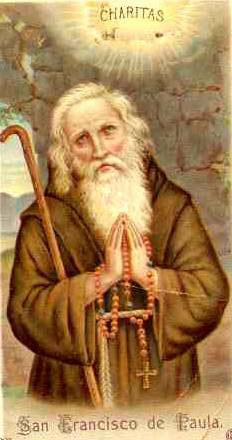Ancient See of Oslo in Norway
FREE Catholic Classes
(ASLOIA, ASLOENSIS.)
Oslo occupied part of the site of Christiania (founded 1624). After the formation of the Diocese of Hamar in 1152, the Diocese of Oslo was limited to the Provinces of Christiania, Smaalenene, Jarlsberg and Laurvik, and Akershus in Norway, and the Counties of Göteborg (Gothenburg) and Bohus in Sweden. Although Rudolf, a court bishop brought by St. Olave from Rouen, lived at Sarpsborg (1015-30) and worked in the surrounding district, Asgaut (1047-72?) is usually regarded as the first Bishop of Oslo. Of his successors Nicholas Arnesson (1190-1225) played a great though unhappy part in Norwegian politics. Bishop Haakon (1248-65) was very generous towards the chapter of Oslo; he was transferred to Trondhjem. Helge II (1304-21) was also a munificent benefactor of his diocese. Bishop Solomon (1322-52) was the only Norwegian bishop who survived the Black Death in 1349. In 1350 he consecrated Gisebert, Bishop of Bergen, and Gyrder Ivarssön, Bishop of Skalholt (Iceland). In 1352, by a provision of Pope Clement VI, Gyrd Aslessön, Bishop of Olso, was compelled to exchange bishoprics with Bishop Sigfrid of Stavanger. Bishop Eystein of Oslo (1385-1407) and Dean Arne of the Royal Chapel at Oslo took a prominent part in the negotiations connected with the union of Denmark, Norway, and Sweden under Queen Margaret in 1397. Bishop Aslak Harniktsson Bolt of Oslo exchanged bishoprics in 1408 with Bishop Jakob Knutsson of Bergen, from which see Bolt was tranferred to Trondhjem. In 1522 Hans Mule, a favourite of Christian II and commandant of the Castle of Akershus, forced Bishop Andrew Muus to resign. Mule was consecrated bishop in 1524, but was drowned the same year. He was succeeded in 1525 by Hans Reff (d. 1545), the last Catholic bishop. Although originally a partisan of Christian II, Reff paid homage to Frederick I in 1532. He resigned his bishopric into King Christian III's hands in 1536, but was appointed as Lutheran superintendent of the Dioceses of Oslo and Hamar in 1541.
The cathedral of Oslo, which originated from the foundation of the town by King Harald Hardraade (c. 1060), was the finest building in the diocese. It was dedicated to St. Halvard, a cousin of Kings Harald Hardraade and St. Olaf, who had been killed when defending a pregnant woman from her pursuers, and whose body was cast up on the shore near Oslo. His silver shrine was placed in the cathedral, when it was rebuilt after Oslo had been burnt by the Danes in 1137, and it remained there till the Reformation. Important councils were held at Oslo in 1306 and 1436. The first of these was largely concerned with the maintenance of discipline in religious houses. It also issued an exhortation to bishops to have a priest always ready to hear confessions in every cathedral church. In 1436 canons were made with regard to the payment of tithe and other matters. Besides the cathedral chapter with an archpriest and canons, founded soon after 1150, there was a collegiate church at Oslo, namely, the Royal Chapel of St. Mary, with a provost, six canons, and six vicars. In 1314 Haakon V united the provostship of St. Mary's, Oslo, with the dignity of chancellor of the kingdom. The city also contained a Benedictine nunnery (Nonneseter) dedicated to St. Mary and founded before 1150, as well as a Dominican priory (St. Olave's) from before 1240 and a Franciscan priory founded about 1286. The great Cistercian Abbey of Hovedoe lay close to Oslo and was founded by monks from Kirkstead in Lincolnshire (England) in 1147. Other religious houses in the diocese were the Premonstratensian Abbey of St. Olaf at Tönsberg founded from Prémontré (c. 1190), and the Benedictine nunnery at Gimsoe (c. 1110). There were also Franciscan (Minorite) priories at Tönsberg, Konghelle, and Marstrand (Sweden). Dragsmark (Mariskog, Silva Sanctae Mariae), in the Swedish part of the diocese, seems to have belonged to the Premonstratensians. Lastly there were the Hospital of St. John of Jerusalem at Varna, for the benefit of the king's courtiers and followers, and the house of Augustinian canons, Kastelle near Konghelle, both founded about 1198.
Join the Movement
When you sign up below, you don't just join an email list - you're joining an entire movement for Free world class Catholic education.

-

- Stations of the Cross
- Easter / Lent
- 5 Lenten Prayers
- Ash Wednesday
- Living Lent
- 7 Morning Prayers
- Mysteries of the Rosary
- Litany of the Bl. Virgin Mary
- Popular Saints
- Popular Prayers
- Female Saints
- Saint Feast Days by Month
- Pray the Rosary
Pope Francis’ April Prayer Intention: Using Technology to Strengthen Human Connections
Finding Peace Through Prayer in a World of Worry
Trump Administration Withholds Federal Grants from Planned Parenthood Over DEI and Civil Rights Concerns
Daily Catholic
 Daily Readings for Wednesday, April 02, 2025
Daily Readings for Wednesday, April 02, 2025 St. Francis of Paola: Saint of the Day for Wednesday, April 02, 2025
St. Francis of Paola: Saint of the Day for Wednesday, April 02, 2025 Prayer for God's Help in Daily Actions: Prayer of the Day for Friday, March 14, 2025
Prayer for God's Help in Daily Actions: Prayer of the Day for Friday, March 14, 2025 Daily Readings for Tuesday, April 01, 2025
Daily Readings for Tuesday, April 01, 2025 St. Hugh of Grenoble: Saint of the Day for Tuesday, April 01, 2025
St. Hugh of Grenoble: Saint of the Day for Tuesday, April 01, 2025- To Perceive Animals as God's Gifts: Prayer of the Day for Thursday, March 13, 2025
![]()
Copyright 2025 Catholic Online. All materials contained on this site, whether written, audible or visual are the exclusive property of Catholic Online and are protected under U.S. and International copyright laws, © Copyright 2025 Catholic Online. Any unauthorized use, without prior written consent of Catholic Online is strictly forbidden and prohibited.
Catholic Online is a Project of Your Catholic Voice Foundation, a Not-for-Profit Corporation. Your Catholic Voice Foundation has been granted a recognition of tax exemption under Section 501(c)(3) of the Internal Revenue Code. Federal Tax Identification Number: 81-0596847. Your gift is tax-deductible as allowed by law.


 Daily Readings for Wednesday, April 02, 2025
Daily Readings for Wednesday, April 02, 2025 St. Francis of Paola: Saint of the Day for Wednesday, April 02, 2025
St. Francis of Paola: Saint of the Day for Wednesday, April 02, 2025 Prayer for God's Help in Daily Actions: Prayer of the Day for Friday, March 14, 2025
Prayer for God's Help in Daily Actions: Prayer of the Day for Friday, March 14, 2025 St. Hugh of Grenoble: Saint of the Day for Tuesday, April 01, 2025
St. Hugh of Grenoble: Saint of the Day for Tuesday, April 01, 2025

